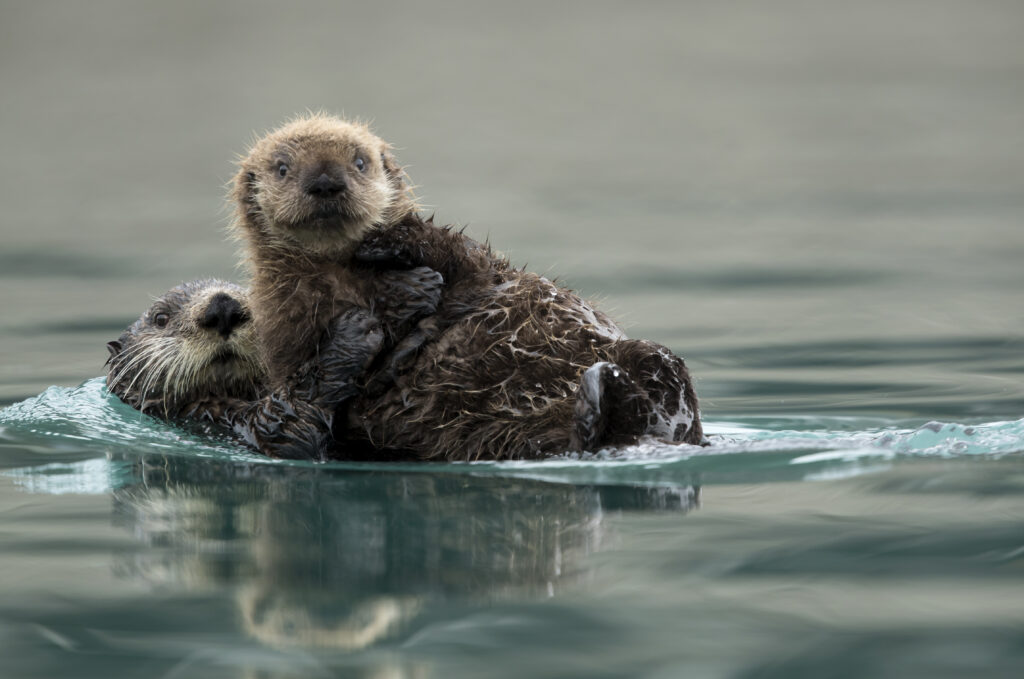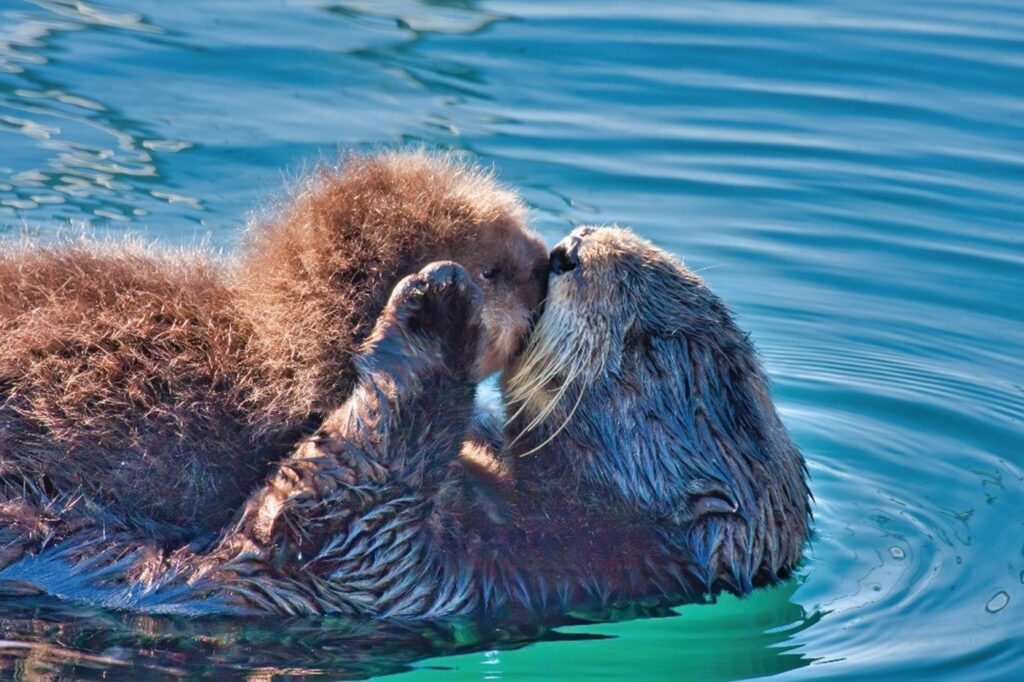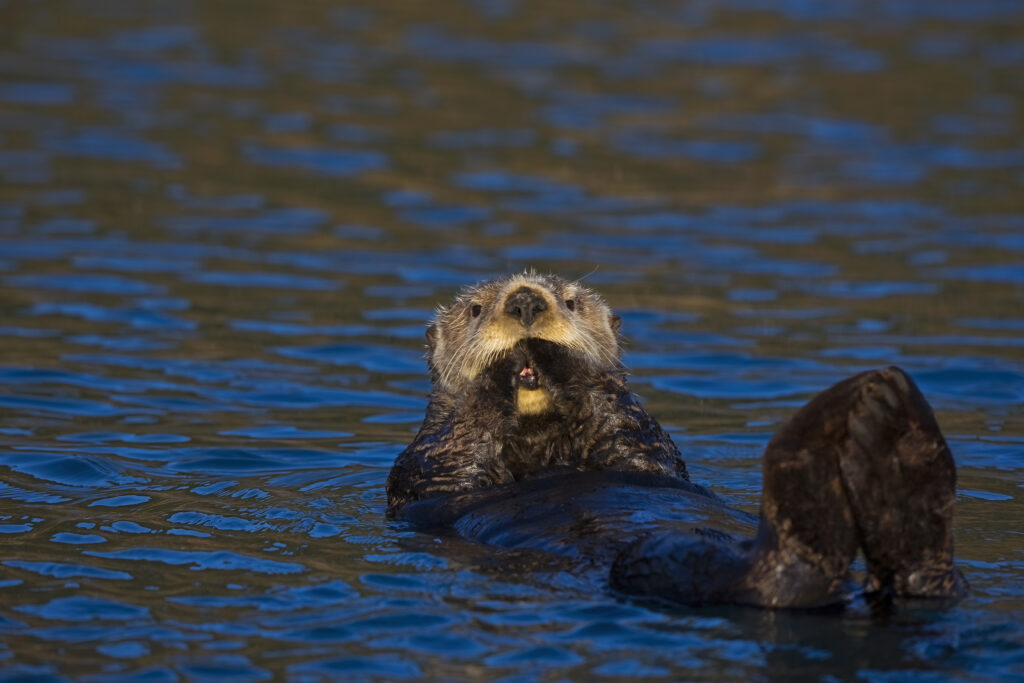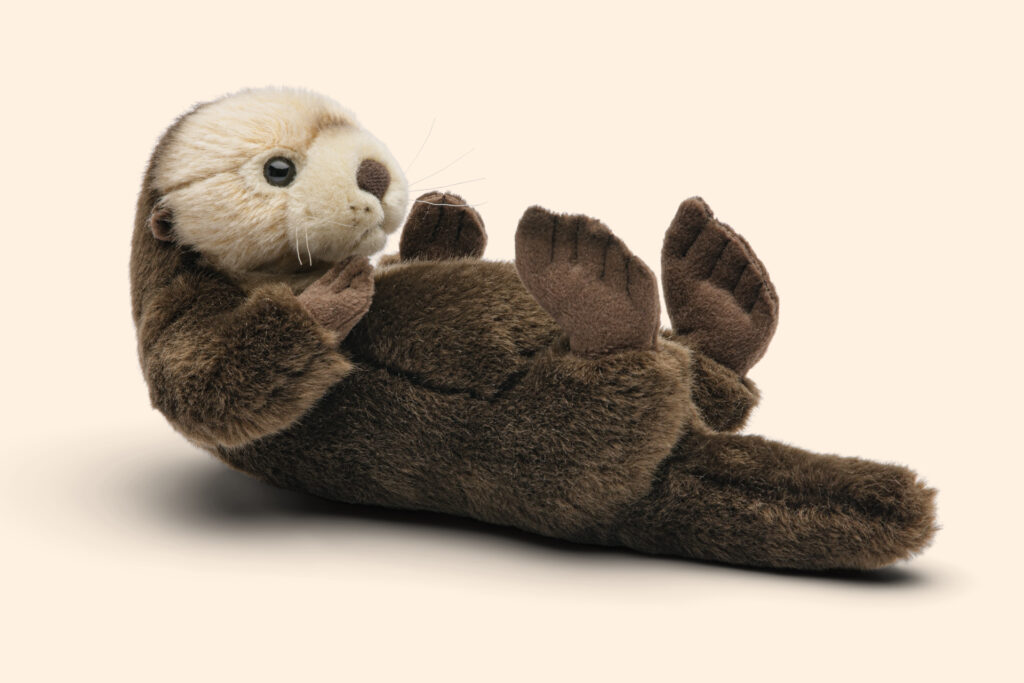10 facts you otter know about sea otters
WWF-Canada has added a new species to our collection of symbolic adoptions — the otterly adorable sea otter. Discover more about this playful mammal, the threats they are facing, and how you can help.

They can go their entire lives without leaving the oceans
Sea otters often live close to shore but can go their entire lives without leaving the sea. The water is where this marine mammal eats, sleeps, plays and gives birth in the sea. Incredibly, sea otters can stay underwater for more than five minutes at a time thanks to their large lungs—which are more than twice as big as other mammals their size.
They protect kelp forests
A keystone species, sea otters fight climate change and keep coastal ecosystems in balance. Sea otters feed on sea urchins that would otherwise overgraze the kelp forests they live in. Not only do kelp forests sequester carbon, but they are also home to many other marine animals such as sea stars, anemones, sea lions, gulls, egrets and whales.

They sleep in rafts
Sea otters can sleep in groups of 10 to 1,000 called rafts. To keep from drifting apart while they rest on the waves, sea otters will hold forepaws or wrap themselves in fronds of kelp.
They have the densest fur of any animal
Unlike whales and other marine mammals, sea otters don’t have a thick layer of blubber to keep them warm. Instead, they rely on their dense, water-resistant fur for insulation. Sea otters are estimated to have up one million hair follicles per square inch!

Pups don’t sink
Otter pups have a special buoyant fur called lanugo. It is so dense and airy that pups can’t dive underwater – but they also can’t sink, which is good news for mom.
Sadly, their fur also makes them vulnerable
Historically over-hunted for their valuable fur, sea otters were almost driven to extinction in the past but are now protected by law. While numbers have bounced back, this member of the weasel family is unfortunately still classified as Endangered by the IUCN Red List of Threatened Species. Today, their fur makes them particularly vulnerable to oil spills. When a sea otter’s thick fur gets coated in oil, it can’t absorb enough air to keep them warm, which can result in hypothermia.

Sea otters eat a lot
Sea otters need to eat at least 25 per cent of their body weight every day to keep up with how quickly they digest their food.
And they catch prey in their own unique way
Sea otters are carnivores and one of the only mammals that use tools to feed. Sea otters have been observed using rocks as hammers to break open and eat hard-shelled prey like sea urchins, clams and mussels. They are also the only marine mammal that flips boulders on the sea floor in search of their next meal or uses its paws (not mouth) to catch fish.

One paw in their pocket
Sea otters have a baggy pouch of loose skin under each armpit that they use like pockets to store food and their favourite rocks.
They need our help to protect their numbers
In Canada, sea otters are found in shallow coastal areas off northern British Columbia where they are facing new threats such as bycatch, entanglement in fishing gear, pollution, oil spills and warming ocean temperatures.
When you adopt a sea otter, you protect so much more
To protect sea otters and other at-risk marine species, WWF-Canada is championing the creation of marine protected areas, putting an end to the dumping of harmful ship waste and supporting the restoration of coastal areas. When you adopt a sea otter, you’re funding conservation efforts like these across the country so sea otters and all wildlife can thrive.
Each symbolic adoption kit includes a realistic plush, educational poster, personalized adoption certificate and (optional) reusable tote bag.
Searching for adorable and meaningful holiday gift ideas? Choose from 45+ adoption kits, adoption cards, wild sock bundles, hoodies and more at wwfcastg.wwf.ca/shop.

